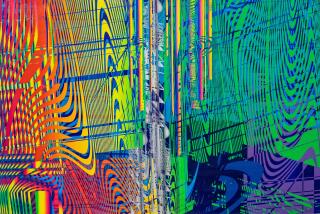BERTHA LUM by Mary Gravalos and...
- Share via
BERTHA LUM by Mary Gravalos and Carol Pulin; HELEN HYDE by Tim Mason and Lynn Mason (Smithsonian: $19.95 each, illustrated). The most recent entries in the “American Print-Makers” series are devoted to a pair of artists whose work is beginning to enjoy a revived interest after decades of neglect. Superficially, the careers of Lum and Hyde appear similar--both women worked in Japan, China and the United States; both were influenced by the Japanese Ukiyo-e masters; both were widely exhibited during their lifetimes. Born into a wealthy San Francisco family, Hyde (1868-1916) became one of the first American artists to create tinted etching by hand-rubbing the plates with colored inks (a technique called a la poupee ) . Although her work was popular at the turn of the century, the self-conscious exoticism and Edwardian sentimentality of her studies of Oriental and Latin American children is likely to remind modern viewers of the saccharine excesses of Hummel figurines. Lum (1869-1954) was a more gifted graphic artist. Her subtle use of shading and atmospheric effects reveals the influence of the Japanese wood-block masters, especially Hiroshige: The famous print “Point Lobos” (1920) suggests a marriage of Oriental techniques and Western subject matter. Lum also created illustrations for a number of magazines and children’s books, combining Japonism landscapes with intricate, Art Nouveau figures reminiscent of Rackham and Dulac.
More to Read
The biggest entertainment stories
Get our big stories about Hollywood, film, television, music, arts, culture and more right in your inbox as soon as they publish.
You may occasionally receive promotional content from the Los Angeles Times.








